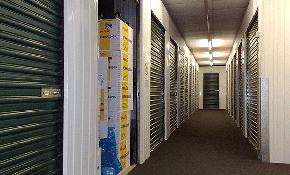PORTLAND-The latest document regarding completion of the city’s Rose Quarter recommends transforming it into a traditional mixed-use district instead of the 24-hour entertainment district originally envisioned but never achieved.
The draft report by Urban Design Associates of Pittsburgh suggests that if the Memorial Coliseum is torn down and a major league baseball stadium is not built in the area, the Rose Quarter “could potentially be one of the most dynamic and exciting new districts in the city… .”
The report envisions another Pearl District–the city’s former warehouse district–with mid-rise buildings on traditional city blocks filled with apartments, office space and ground-floor restaurants and retail shops. Then again, this is the third such plan since billionaire Paul Allen said he could turn the Rose Quarter into something special.
The 1992 Rose Quarter development agreement with Allen built the Rose Garden Arena, three parking structures and an adjacent office building with ground-floor retail that opened onto a public plaza. It also gave Allen control of several parcels that remain undeveloped, underdeveloped or, in the case of Memorial Coliseum, in dire need of redevelopment.
Excitement around the original plan brought in major restaurant and retail concepts like Cucina Cucina Italian Cafe, TGI Friday’s Front Row Sports Grill and Nike into the Quarter. The 1995 Rose Quarter master plan laid out the strategy for creating the district, but those involved in the process say few, if any, of the proposals were ever implemented.
Since then, all of the aforementioned retailers have ceased operations save for Cucina Cucina. Real estate sources say the Schwartz brothers’ restaurant chain is either paying a discounted rent or able to make it work by using employees from its nearby Tigard location, said to be one of the Seattle company’s best performing stores.
In 1998, Allen hired Portland-based Schnitzer Development Corp. to produce a third report on development options for the 37-acre Rose Quarter. The report, which has never received public scrutiny, reportedly contained specific development options laid out for each piece of property. It is not known whether the plan also included proposals for the grain silos adjacent to the hotel, which Allen has tried to purchase from the Louis Dreyfus Corp. on more than one occasion.
Allen has development rights to all of the city-owned property within the Rose Quarter, and also owns the former Red Lion Coliseum Hotel on the nearby riverfront now being managed for Allen by the DoubleTree Corp. Specifically, Allen has air rights above the two parking garages on the north side of the Coliseum, a half-acre parcel west of the garage structures, another half-acre parcel on the south side of the Coliseum and the Coliseum itself.
The 2001 Urban Design Associates report says tearing down the Coliseum would open up the equivalent of four city blocks, allowing for a traditional street grid to be reinstated. The non-preferred option retains all existing buildings but renovates them for other uses.
Both scenarios, however, envision better pedestrian access, a remodeled light rail transit station, more park space and better access to the nearby Willamette riverfront, in part by capping sections of Interstate 5. The city council is expected to consider the recommendations and approve what will be the fourth roadmap for the area’s future. Whether it will end up buried deep in the glove compartment like the others remains to be seen.
Jay Isaac, Allen’s right-hand man in Portland, told GlobeSt.com in December that with the Schnitzer report, “We went to the point of having experts in each area (office, hospitality, retail, entertainment) give us their opinion on what usages might work, and then analyzed the profitability of each usage,” Isaac told GlobeSt.com. “We didn’t find anything that should immediately be developed.”
What Isaac said he did find is “limited” opportunities for the “air rights” above the parking structures. He says they cannot support the weight of an office building – meaning an expensive superstructure would have to be built – and they’re too heavily used for Rose Quarter events to be shut down during construction.
The study “took a real good look” at office space on most of the development sites, but with two new office buildings going up downtown (both have been completed since this quote, and now three more are planned), “we didn’t (identify) anything in the current business cycle that we felt hit a normal investors hurdle right.”





 Copyright © 2024 ALM Global, LLC. All Rights Reserved.
Copyright © 2024 ALM Global, LLC. All Rights Reserved.











